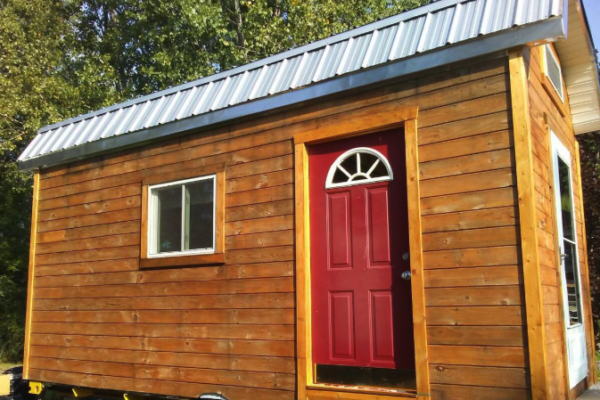A Chinese substitute teacher at a public school in Jefferson County, northwestern New York, purchased a 46-acre piece of forest land 10 years ago for only $27,000. Little did she know that the trend of “tiny houses” and cabins would take off later on, leading her to build and live in simple yet authentic dwellings on her land.
Situated near the Thousand Islands in New York, a popular tourist destination, her tiny houses gained attention when listed on the short-term rental service Airbnb.
The Chinese teacher, Ling Wu, immigrated to the United States over 20 years ago. In 2013, she bought the vast forest land for a bargain, saying, “I didn’t think twice back then, feeling it was too cheap, with clean water source. Only after I bought it did I realize there were no power lines, no electricity.”
Nevertheless, Wu decided to go with the flow because she had grown to love the carefree, close-to-nature lifestyle. Owning 46 acres of pristine land in her own name was truly satisfying for her.
In 2014, the TV show “Tiny House Nation” first aired in the United States, significantly boosting public interest in this lifestyle. Social media and video platforms started sharing numerous videos and photos showcasing the creative designs and minimalist practicality of tiny houses. Beginning around 2015, the off-grid living trend gradually gained momentum, becoming even more popular after the 2020 pandemic, as many sought to escape crowded cities for a more nature-immersed, self-sufficient lifestyle.
Wu’s first tiny house was built in 2016-2017 with the help of over ten students she enlisted after purchasing a trailer and house frame materials. The students were eager to learn through hands-on construction.
Located in Antwerp Town, Jefferson County, upstate New York, Wu’s tiny house was set on wheels within the forest land she owned. Antwerp is a rural community only half an hour away from the Thousand Islands.
Measuring 8×18 feet, this tiny house may be small but is fully equipped with a kitchen, gas stove, battery-powered lights, generator, wood-burning fireplace, two Queen Size beds, a composting toilet for composting and a shower with hot water, all while sourcing water from a well.
After completing the tiny house, Wu began living a primitive, self-sufficient lifestyle, practicing a style commonly known as off-grid. She tended to her vegetable garden, lit candles at night, and even used a headlamp for reading.
Wu highlighted that owning a tiny house meant no property tax and the flexibility to move, challenging the conventional notion that owning or renting a house was the only option for housing. With a lower investment, it suited those seeking a simpler lifestyle.
She emphasized that the key issues to address after building a house were water source, power supply, and waste disposal. “Water can be sourced from the city supply or digging a well, while power can come from a generator, candles, battery-powered lights; waste can be managed with a composting toilet.”
Wu observed a growing number of individuals yearning for a modest lifestyle like hers, especially due to the proximity to Thousand Islands. During the peak travel season, many young people preferred staying in forested mini-houses, exploring an alternative life away from the hustle and bustle. She decided to rent out her tiny house as an Airbnb for tourists seeking accommodation during the spring, summer, and fall seasons, receiving positive reviews.
With experience gained from building her own tiny house, Wu continued her innovation on her forest land by constructing a cabin in addition to the tiny house. She aimed to create a “tiny house community” on the farm to accommodate like-minded individuals who enjoy the simple life within tiny houses and cabins.

